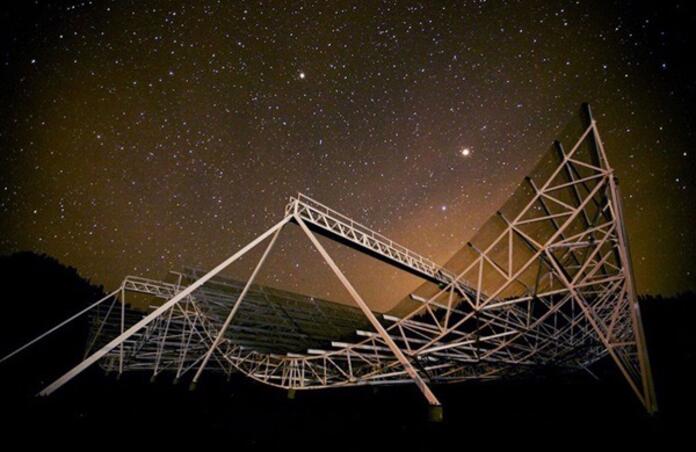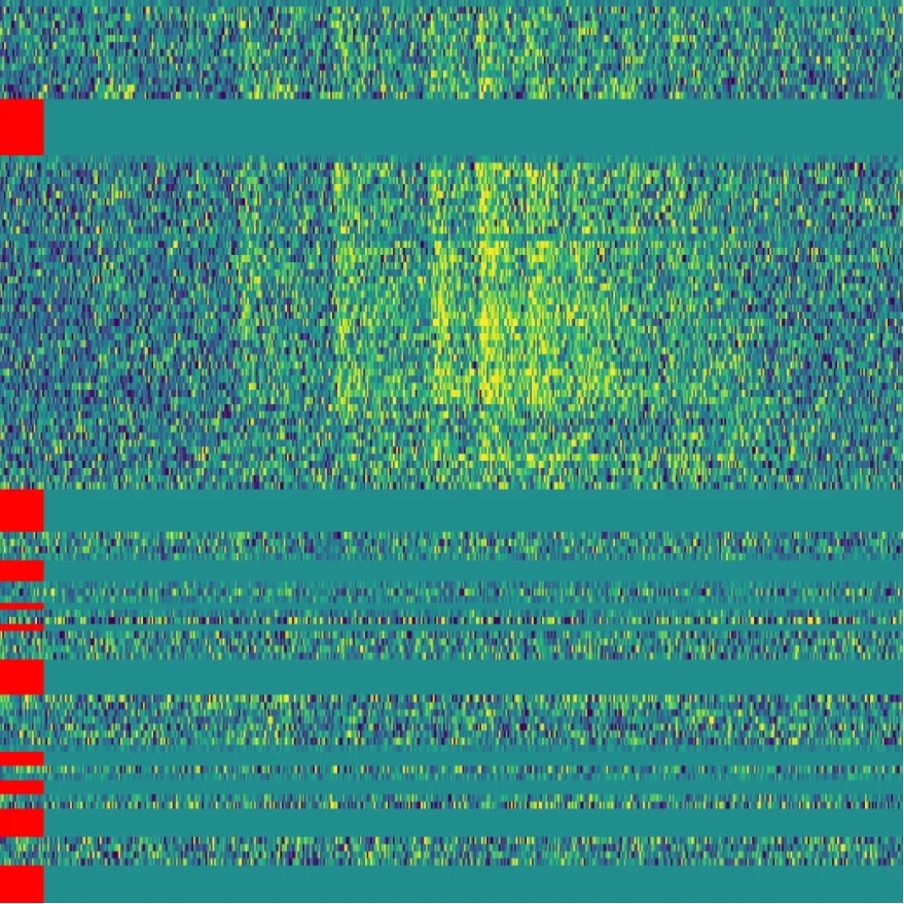Distant Galaxy Emits Strange Radio ‘heartbeat’

A mysterious but persistent radio signal has been detected by astronomers from the CHIME/FRB Collaboration. Dubbed as fast radio bursts (FRB), these signals are extremely strong flashes of radio waves seen at distances of billions of light years and typically last a few milliseconds. However, what makes this particular observation so special is that each radio signal lasted 3 seconds- 1000x longer than the typical length! The pulses were observed at regular intervals of 0.2 seconds, much like a cosmic heartbeat.

The radio pulses labelled FRB 20191221A (due to its discovery in 2019) is currently the longest lasting FRB with the clearest periodic pattern detected, and was observed by CHIME, a radio telescope situated in British Columbia. The telescope is equipped with four large parabolic reflectors and is located at Dominion Radio Astrophysical Observatory. CHIME is more well known for its 3D mapping of hydrogen density via the detection of the 21cm line to ultimately measure the expansion history of our universe. However, like finding a needle in a haystack, by sifting through all of the data collected the telescope has been very successful in detecting FRB sources, discovering over 1000.
The FRB was observed to be coming from a very distant galaxy several billion light years from earth, however the source inside that galaxy is still unknown. Since scientists are still unsure of how FRBs are generated, there are a number of possibilities with neutron stars being the main perpetrators. Neutron stars are the highly dense collapsing cores of giant stars which rotate rapidly and emit beams of radio waves as they do so. There are two types of neutron stars which could be the possible source: radio pulsars and magnetars, the first
emitting pulses of radiation due to the stars’ rotation, and the latter due to magnetic fields. However, although the typical radio emission tempo from these objects is similar to the FRB observed, there is an extreme difference in luminosity- the bursts coming from the unknown source are over one million times brighter. This suggests that there is a mysterious additional process happening which is increasing the emission to such high amounts, and astronomers may be dealing with a neutron star on steroids.
Another potential cause of the signals are large outbursts on magnetars. A particularly strong burst may cause starquakes that interrupt the crust, generating periodic radio waves. Additionally, two neutron stars orbiting each other could result in the regular emission of radio waves- outbursts will occur at the same points in their orbit, where the magnetic regions that surround each star interact. Or maybe its extra-terrestrial life trying to send us a message- there are many possibilities to consider!
The team of astronomers hope to make more measurements of the source, and use these signals as an astrophysical clock. This can be done by using the frequency of the pulses and the way they change as the source moves away from earth to measure the rate of expansion of our universe. Not only can additional detections help further increase the precision of the expansion rate, it will help our understanding of this peculiar source and neutron stars in general.
--
Cover image: CHIME telescope, Keith Vanderlinde/ Dunlap Institute
Image credits:Andersen et al, doi: 10.1038/s41586-022-04841-8
